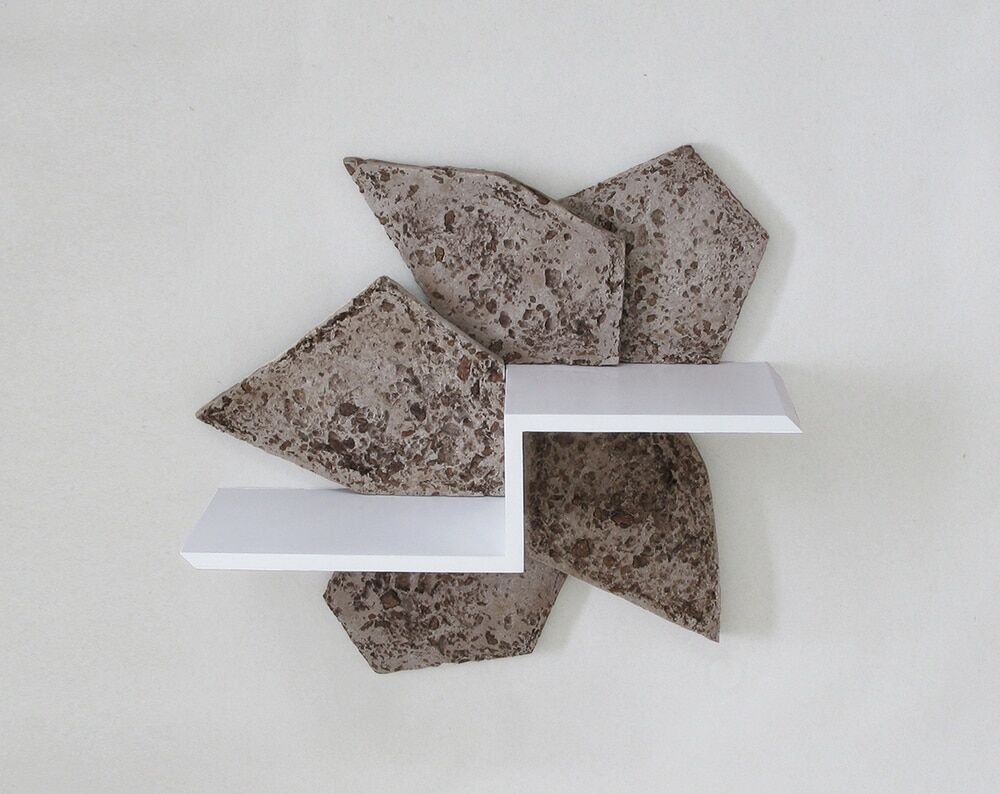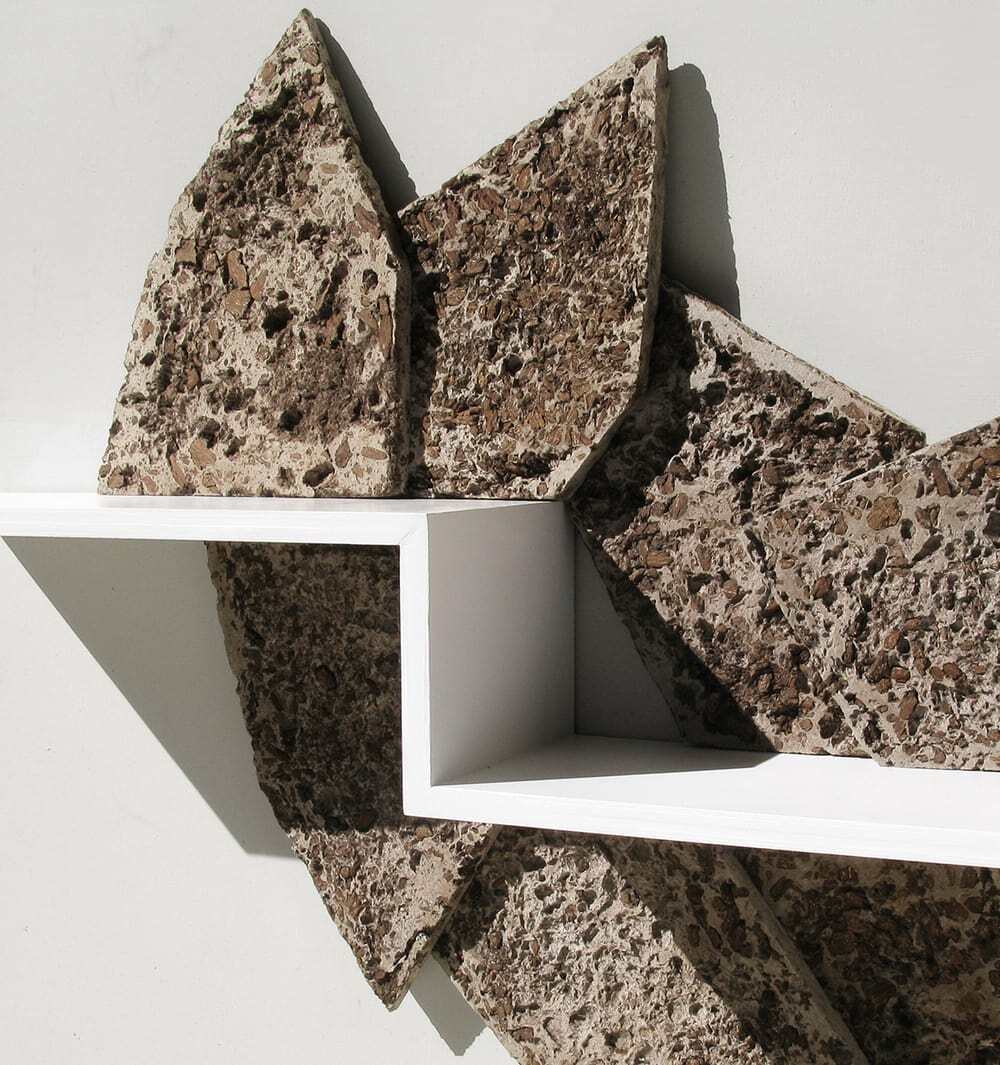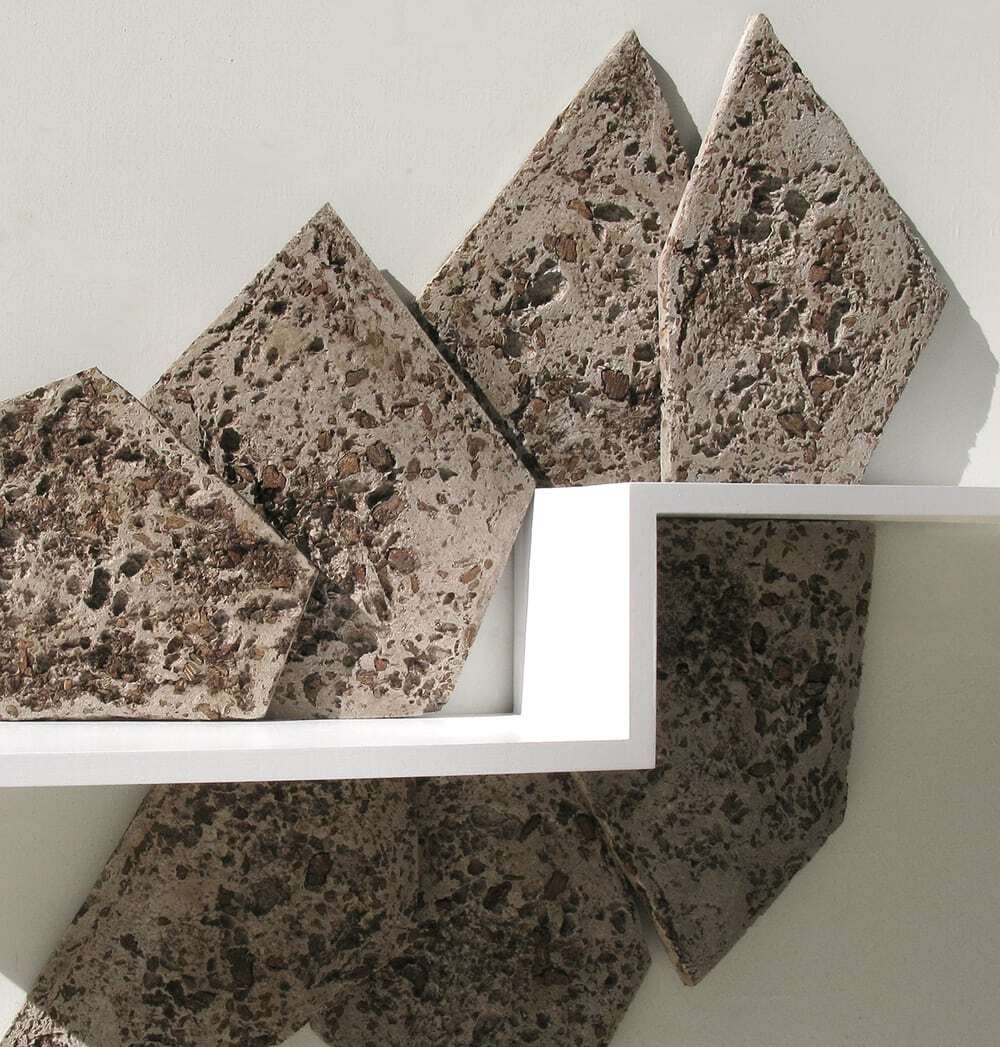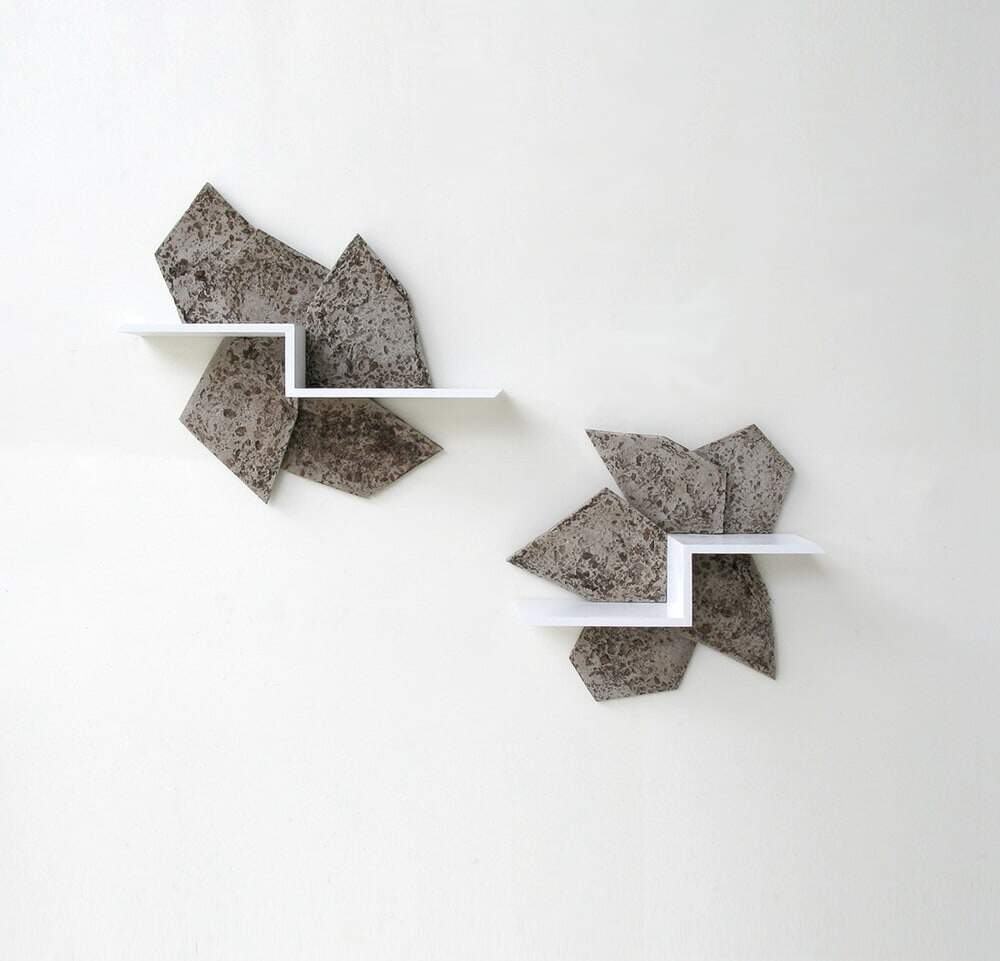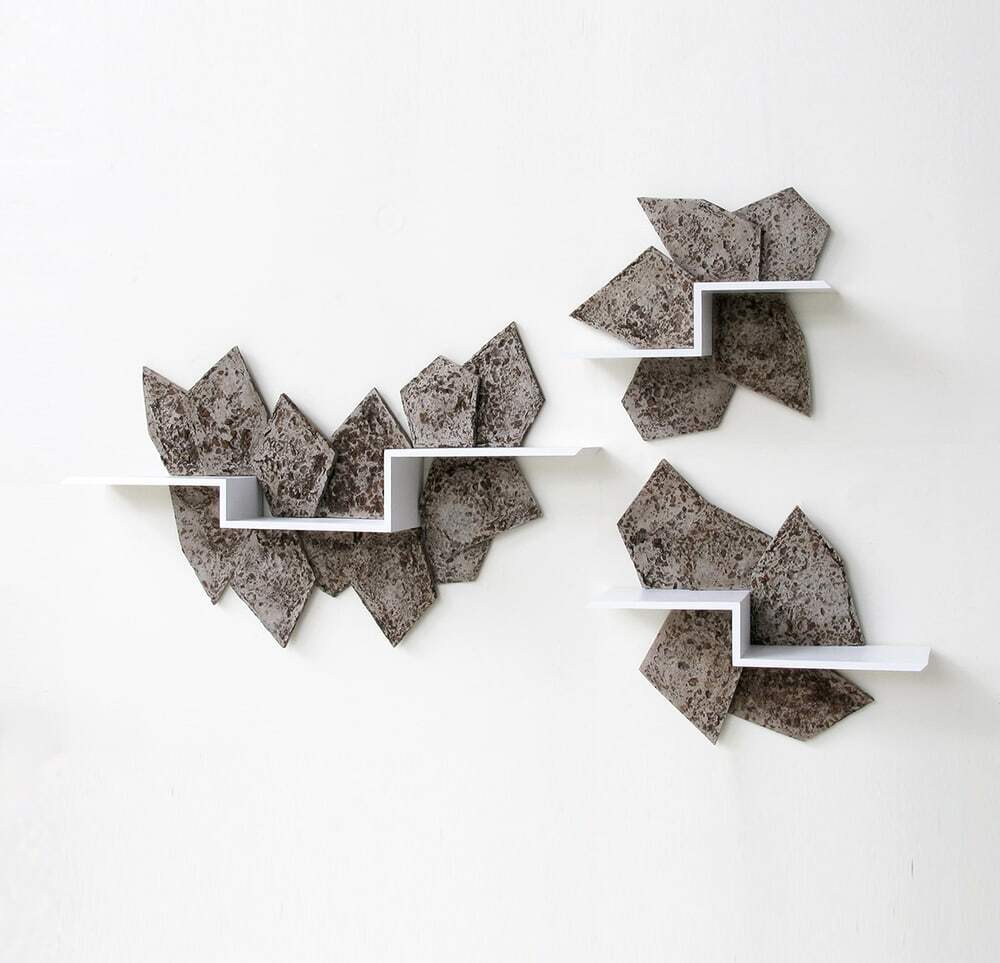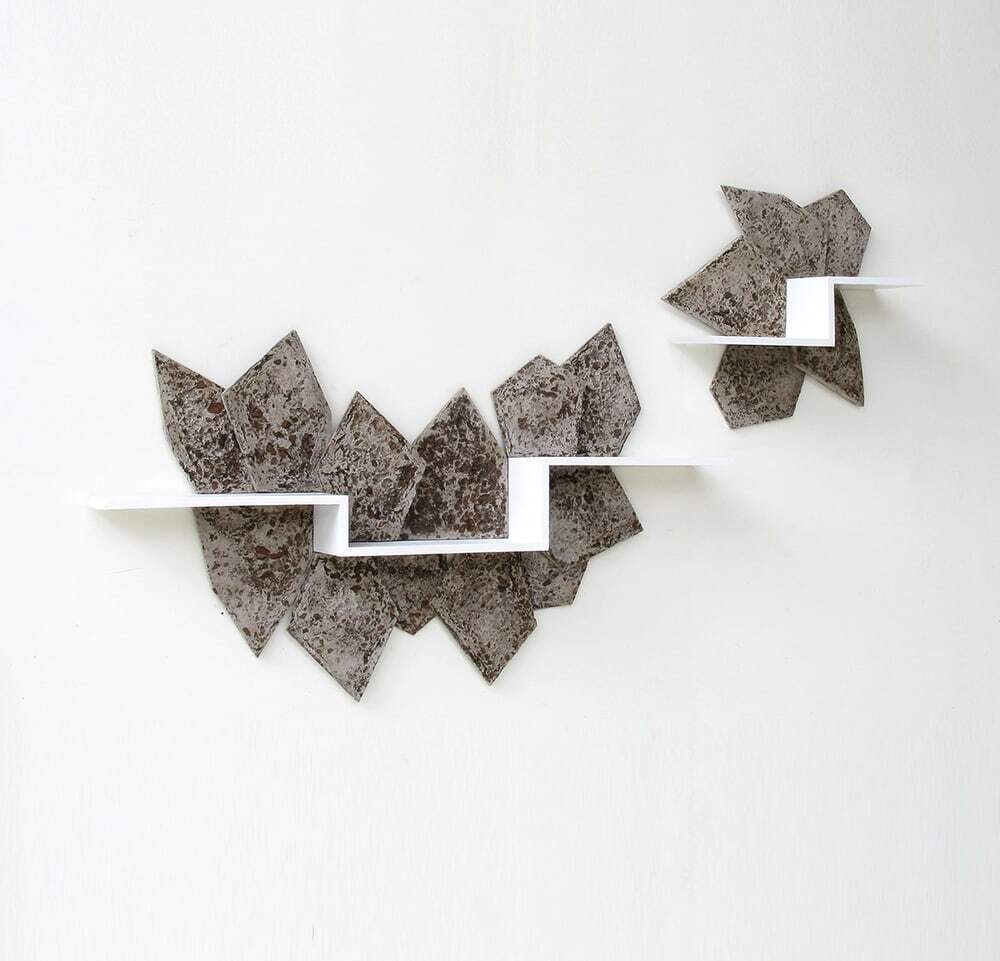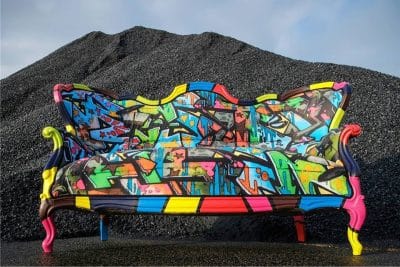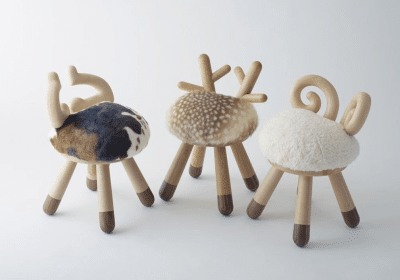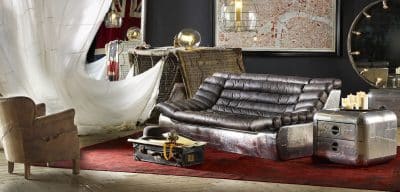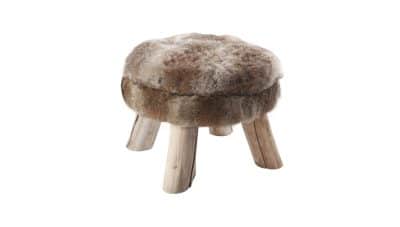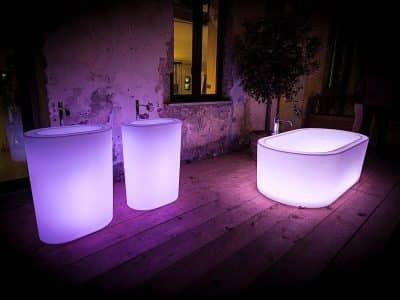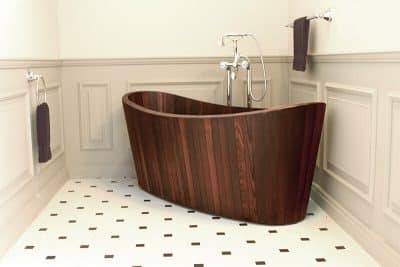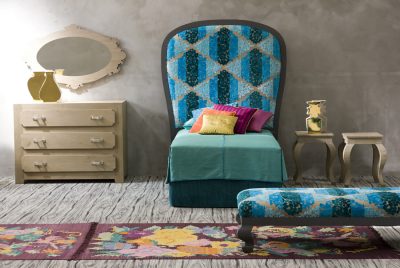Jyuhe is a Japanese word for tree bark, and is the name of this prototype of this wall shelf series. They are made of recycled paper pulp mixed with pulverized oak tree bark from already cut logs, which is in fact a dead tissue of outer most layer of a tree, and the contrasting shelf part is of wood finished with high gloss white paint. It is a search for new texture for the use of paper pulp as a material for an object to occupy the space on the wall.
Each ”scale” of paper pulp/oak bark mixture is given individual hexagonal profiles that surround the horizontal shelf plane. Wet felted recycled paper pulp with binder is placed inside the hexagonal profile drawn on the surface of Tyvek where the pulverized oak bark is randomly spread out. While it is drying, a slab of stone is put on top in order to press the mixture for more density. When it is completely dry (it takes about a week), the bottom side covered with oak chips is sanded down much like the way terrazzo is polished. In this vibrating, sanding process, some pieces of bark chips fall out from the surface leaving the cavity, which further adds to the texture. After this process, the entire “scale” is covered by brown- reddish liquid dye made from boiling the oak bark.
The Jyuhe Wall Shelf Series by Taeg Nishimoto explores the notion that when the material is recycled for another life, it should acquire a completely new image and association rather than suggesting where the initial material comes from. It is about evolving into a new unseen materiality beyond the expectation of what it would become in the new state. Jyuhe’s form and texture as a wall shelf is hoped to capture that notion, as the paper pulp and discarded bark actually both come from the same source; tree. And perhaps one feels the presence of an old tree when placing objects on the shelf.
Five prototypes are from 45cm wide to 100cm wide.

